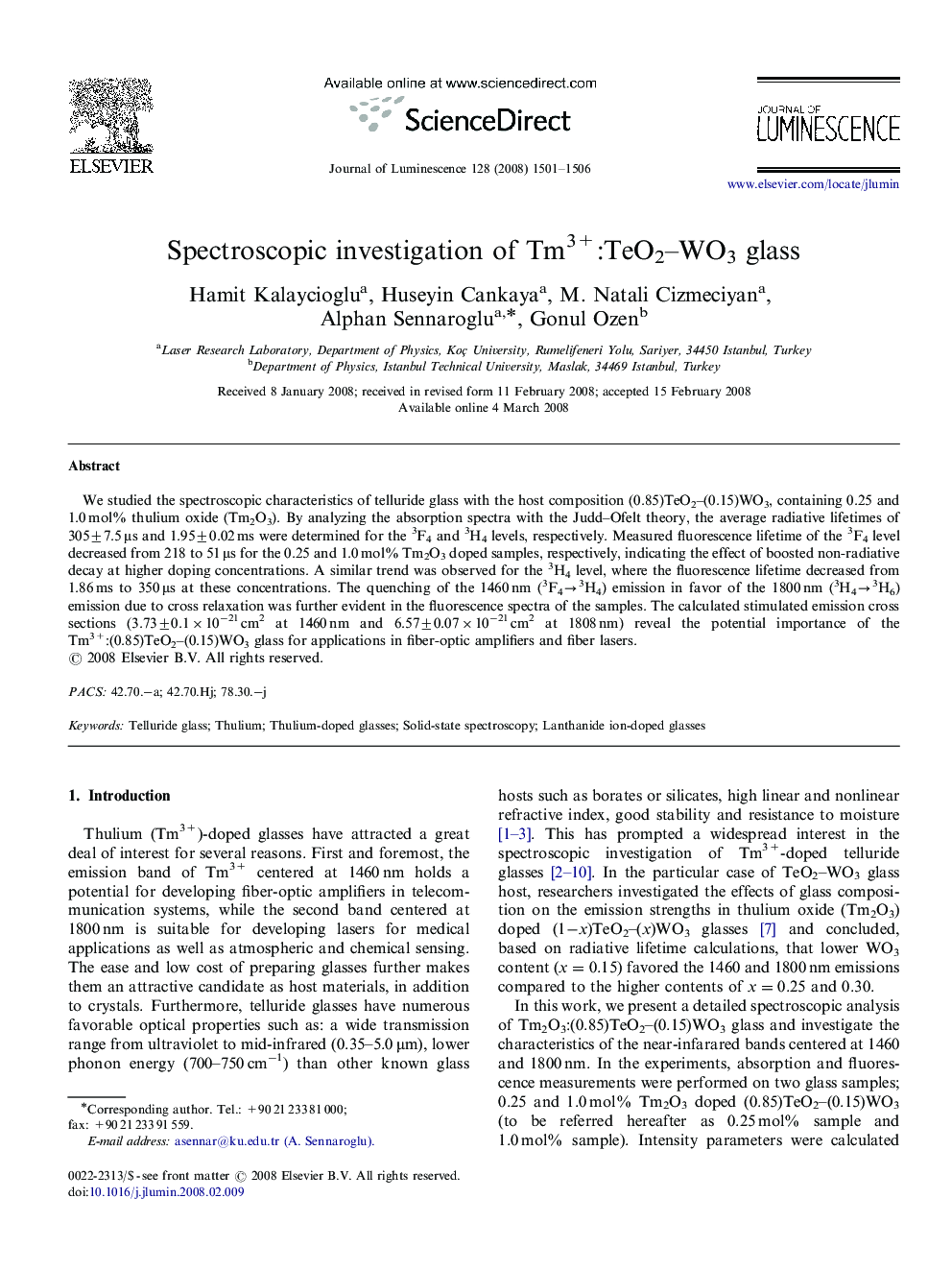| Article ID | Journal | Published Year | Pages | File Type |
|---|---|---|---|---|
| 5403479 | Journal of Luminescence | 2008 | 6 Pages |
Abstract
We studied the spectroscopic characteristics of telluride glass with the host composition (0.85)TeO2-(0.15)WO3, containing 0.25 and 1.0 mol% thulium oxide (Tm2O3). By analyzing the absorption spectra with the Judd-Ofelt theory, the average radiative lifetimes of 305±7.5 μs and 1.95±0.02 ms were determined for the 3F4 and 3H4 levels, respectively. Measured fluorescence lifetime of the 3F4 level decreased from 218 to 51 μs for the 0.25 and 1.0 mol% Tm2O3 doped samples, respectively, indicating the effect of boosted non-radiative decay at higher doping concentrations. A similar trend was observed for the 3H4 level, where the fluorescence lifetime decreased from 1.86 ms to 350 μs at these concentrations. The quenching of the 1460 nm (3F4â3H4) emission in favor of the 1800 nm (3H4â3H6) emission due to cross relaxation was further evident in the fluorescence spectra of the samples. The calculated stimulated emission cross sections (3.73±0.1Ã10â21 cm2 at 1460 nm and 6.57±0.07Ã10â21 cm2 at 1808 nm) reveal the potential importance of the Tm3+:(0.85)TeO2-(0.15)WO3 glass for applications in fiber-optic amplifiers and fiber lasers.
Related Topics
Physical Sciences and Engineering
Chemistry
Physical and Theoretical Chemistry
Authors
Hamit Kalaycioglu, Huseyin Cankaya, M. Natali Cizmeciyan, Alphan Sennaroglu, Gonul Ozen,
